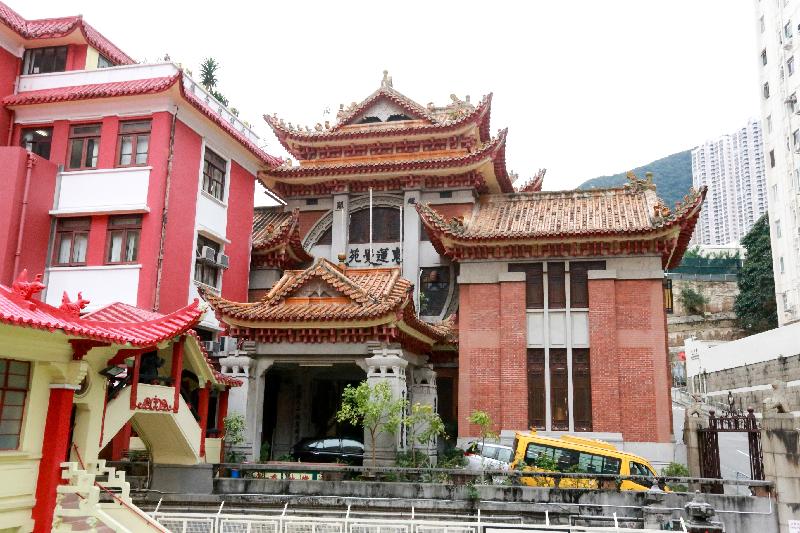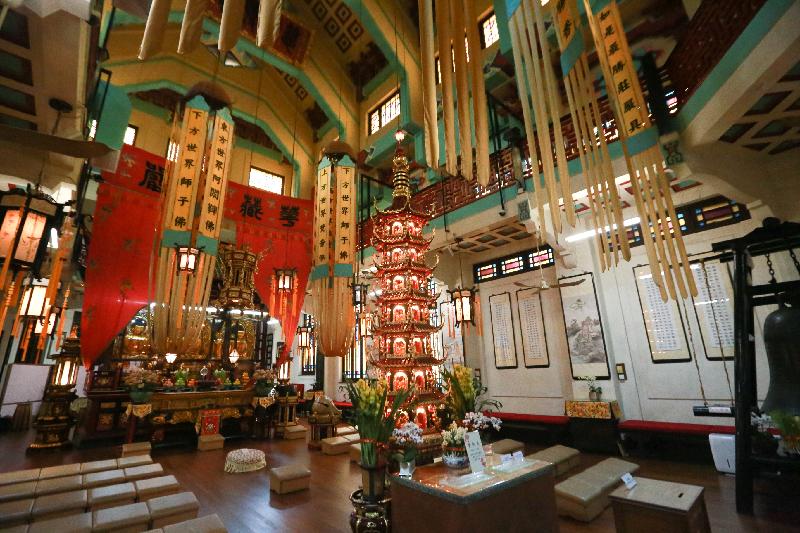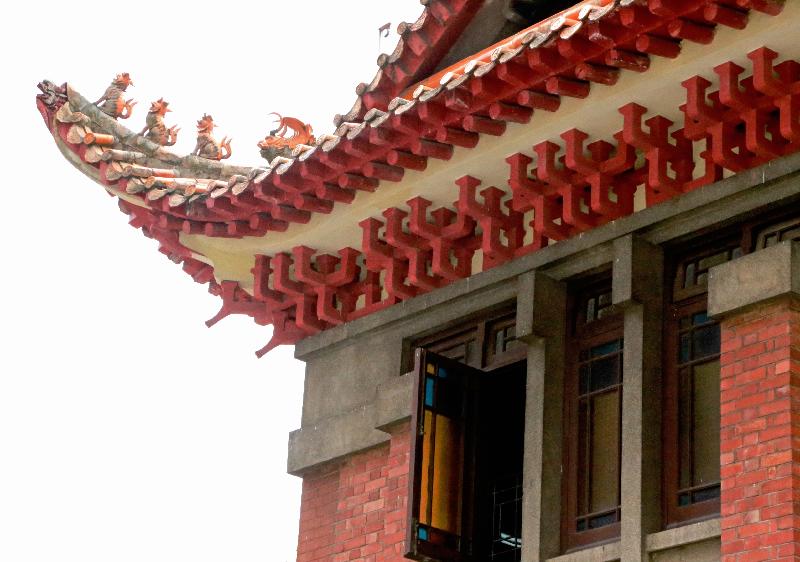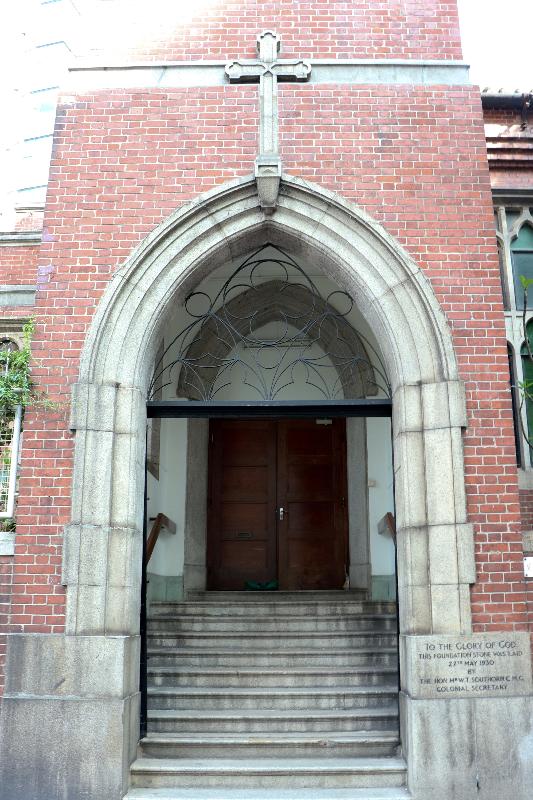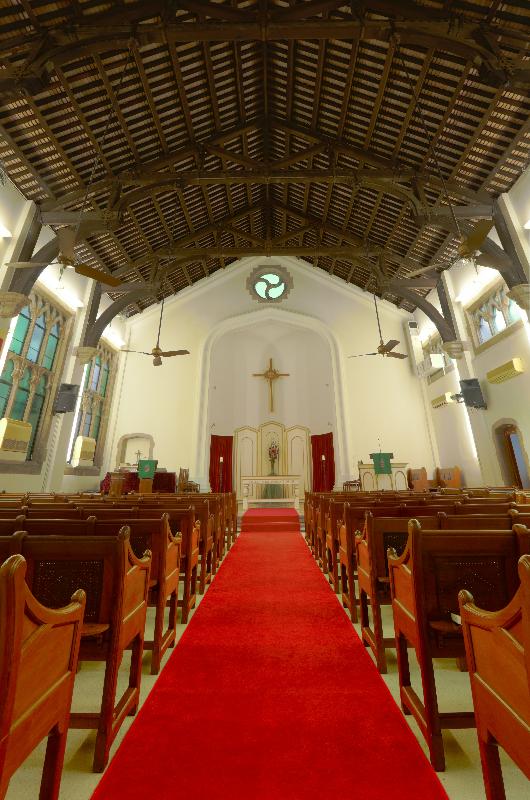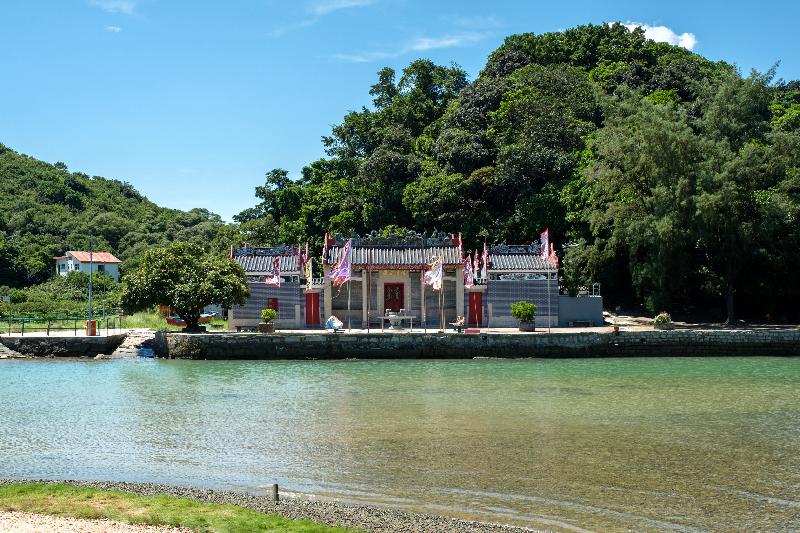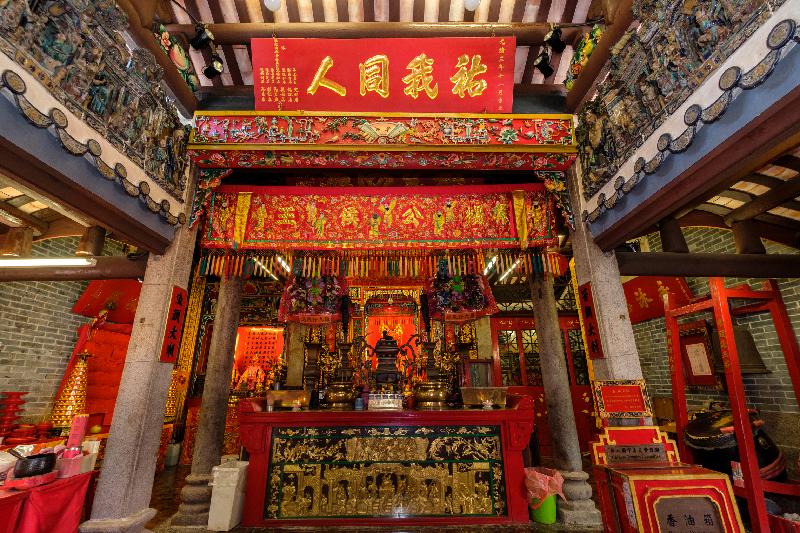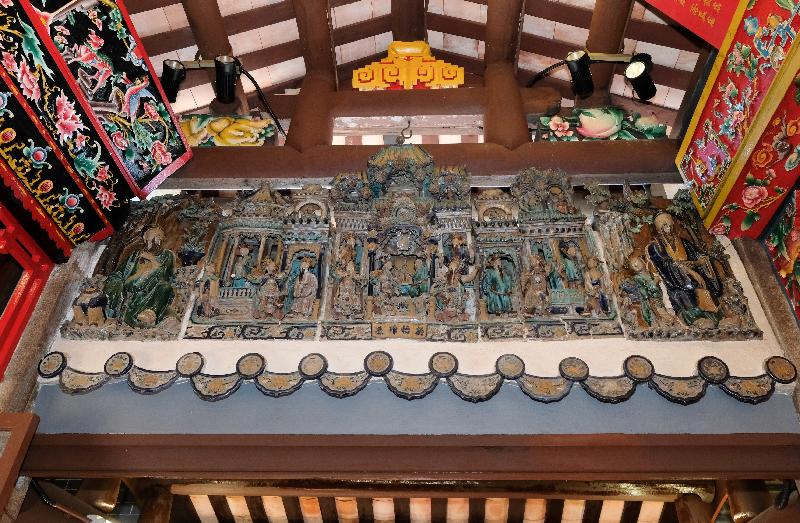Three historic buildings declared monuments (with photos)
*********************************************************
Completed in 1935, Tung Lin Kok Yuen is a Buddhist temple founded by Lady Clara Ho Tung, a Buddhist, and her husband Sir Robert Ho Tung as a permanent institution to preach Buddhism and promote education. When the building was first opened, it housed Po Kok Free School and Po Kok Buddhist Institute, which were two educational institutions for women founded in Hong Kong by Lady Clara in the early 1930s. Since its establishment, Tung Lin Kok Yuen has played a significant religious and educational role in the Chinese community for its strong association with the early development of female education, and the development and teaching of modern Chinese Buddhism.
Tung Lin Kok Yuen was designed by Fung Tsun, an architect trained in Hong Kong and London, with the help of Shi Ai Ting who provided extensive advice for details which embody the Buddhist doctrine. Tung Lin Kok Yuen adopted Western structural forms, combined with traditional Chinese designs, details and decorations, such as flying eaves, brackets and glazed tile roofs. Internal decorative features, including aisle railings and wall and ceiling mouldings, are also in strong Chinese colours and design. With its arrowhead-shaped building plan, Tung Kin Kok Yuen's appearance resembles a giant ship, symbolising one of Mahayana Buddhism's concepts of ferrying all beings to the "other shore", or in other words enlightenment itself. The building follows the traditional Chinese layout for a Buddhist monastery design, with halls in designated sequence.
Kowloon Union Church was built by the London Missionary Society with financial support from Sir Paul Chater. The foundation stone was laid on May 27, 1930, by the then Colonial Secretary, W T Southorn, and the church was officially opened on April 10, 1931, by the then Governor Sir William Peel. During the Japanese occupation, the church ceased to function and the building was converted into a horse stable by the Japanese army and suffered severe looting and damage. The church was opened again for public worship with a rededication service held on October 19, 1947, and continues to serve the community to this day.
The church possesses Perpendicular Gothic architectural features, with a pitched Chinese-tiled roof, red load-bearing brick walls and contrasting grey granite steps and window surrounds. A semicircular apse and an attached three-storey battlemented tower were built at the two ends of the church respectively. The windows of the church are set in decorative granite framing in the form of trefoil-headed tracery. The elegant double hammer-beam timber roof trusses with carved granite corbel supports are a rare and dominant feature of the spacious interior of the main hall of the church.
The Yeung Hau Temple was probably built in 1699 or earlier with reference to the oldest relic at the temple, an iron bell cast in the 38th year of Kangxi's reign (1699) of the Qing dynasty dedicated to the deity of Hau Wong. The temple is one of the oldest temples in Tai O and has long been patronised not only by fishing folk and fisheries merchants in Tai O, but also by merchants from the neighbouring places and the Qing soldiers along the coast. The temple is also popular for its strong association with the Tai O dragon boat water parade, which is a traditional festive event with a history of over 100 years and was inscribed onto the third national list of intangible cultural heritage of China in 2011.
The temple compound consists of the main temple building and side halls constructed of grey brick, granite and timber. The main temple building is a Qing vernacular two-hall, three-bay building, with a courtyard covered with a pavilion in between the two halls. The recessed façade is supported by granite columns. Exquisite historic Shiwan ceramic figurines portraying Chinese folk stories can also be found on the roof ridge of the entrance hall and the two parapet walls of the covered courtyard.
Information on the three monuments is available on the heritage conservation website of the Development Bureau (www.heritage.gov.hk).
Ends/Friday, October 13, 2017
Issued at HKT 12:55
Issued at HKT 12:55
NNNN





